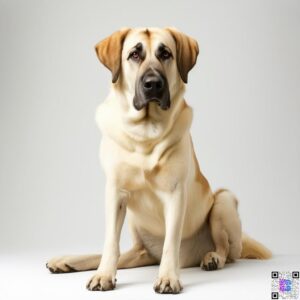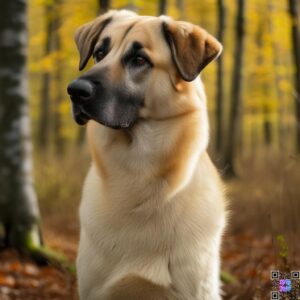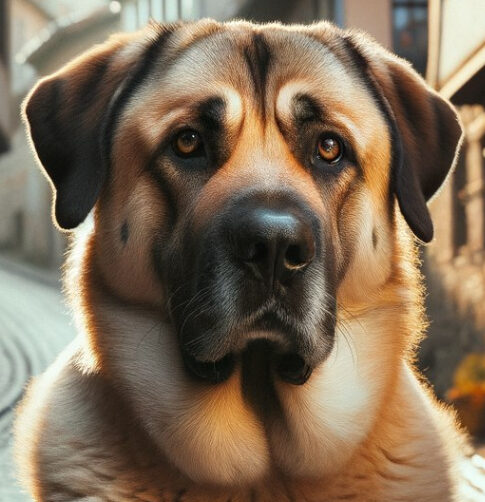Introduction
The Anatolian Shepherd is a breed with a captivating history that stretches back centuries, rooted in the rugged landscapes of the Anatolian Peninsula. This majestic canine has long been revered as a steadfast guardian of livestock, a role that has defined its evolution and enduring legacy. As we delve into the fascinating history of the Anatolian Shepherd, we’ll uncover the breed’s ancient origins, its versatile capabilities, and its growing global popularity. Recognizing the importance of the Anatolian Shepherd’s heritage and the need to protect the breed, various organizations and individuals have dedicated themselves to conservation efforts and breed preservation.
The Origins of the Anatolian Shepherd

The Anatolian Peninsula: A Cradle of Civilization
The Anatolian Peninsula, situated in modern-day Turkey, has long been a crossroads of civilizations, serving as a bridge between Europe and Asia. This region has witnessed the rise and fall of numerous empires, each leaving an indelible mark on the land and its people. It is within this rich tapestry of history that the Anatolian Shepherd finds its roots.
Ancient Anatolian Shepherd Breeds
The ancestors of the modern Anatolian Shepherd can be traced back to the livestock guardian dogs of ancient Anatolia. These hardy canines were essential companions to the region’s nomadic pastoralists, who relied on their unwavering loyalty and protective instincts to safeguard their herds from predators and threats. Over centuries, these ancient breeds evolved, adapting to the harsh environmental conditions and the unique needs of the Anatolian people.
The Emergence of the Modern Anatolian Shepherd
As the Anatolian Peninsula continued to shape the course of history, the livestock guardian dogs of the region also underwent a transformation. Through selective breeding and the influence of various cultural and societal factors, the modern Anatolian Shepherd emerged as a distinct breed, retaining the essential characteristics that had made its ancestors such invaluable assets to the Anatolian people.
The Versatile Anatolian Shepherd
Guarding Livestock: The Anatolian’s Primary Role
At the heart of the Anatolian Shepherd’s history lies its unwavering dedication to guarding livestock. These formidable canines have long been the trusted companions of shepherds and farmers, fiercely protecting their herds from predators such as wolves, bears, and even large felines. Their imposing size, keen senses, and innate protective instincts make them formidable guardians, ensuring the safety and well-being of the animals in their care.
Adaptability to Harsh Environments
The Anatolian Shepherd’s ability to thrive in the rugged terrain and extreme climates of the Anatolian Peninsula is a testament to its resilience and adaptability. These dogs have evolved to withstand the blistering heat, bitter cold, and unpredictable weather conditions that characterize the region, making them well-suited to the demands of their livestock-guarding duties.
Loyalty and Protective Instincts
The Anatolian Shepherd’s unwavering loyalty and fierce protective instincts are hallmarks of the breed. These dogs form strong bonds with their human families and the livestock they guard, and they will go to great lengths to ensure the safety and well-being of those under their care. Their natural suspicion of strangers and intruders, combined with their physical strength and courage, make them formidable guardians.
Herding and Guarding Capabilities
In addition to their primary role as livestock guardians, Anatolian Shepherds have also demonstrated impressive herding abilities. Their keen intelligence, keen senses, and natural instinct to protect their charges make them adept at guiding and managing herds, working in tandem with their human counterparts to ensure the efficient and safe movement of livestock.
The Anatolian Shepherd’s Breed Characteristics
Physical Appearance and Size
The Anatolian Shepherd is a large, muscular breed, with a powerful build that reflects its heritage as a livestock guardian. These dogs typically stand between 27 and 32 inches tall at the shoulder and can weigh anywhere from 90 to 150 pounds, depending on their gender and individual characteristics.
Coat Varieties and Colors
Anatolian Shepherds are known for their thick, double-layered coats that provide insulation and protection against the harsh elements of their native environment. The breed’s coat can range in color from white and cream to fawn, red, and brindle, with some individuals even displaying a mix of these hues.
Temperament and Personality Traits
Anatolian Shepherds are often described as aloof, independent, and reserved, traits that have served them well in their traditional role as guardians. However, they are also deeply loyal, protective, and affectionate towards their human families and the livestock they are entrusted to protect. These dogs require early socialization and training to ensure they develop a well-balanced temperament.
Health Considerations and Lifespan
The Anatolian Shepherd is generally a healthy breed, with a lifespan that typically ranges from 10 to 13 years. However, like all breeds, they can be susceptible to certain health conditions, such as hip and elbow dysplasia, thyroid disorders, and gastric torsion. Responsible breeders and attentive owners play a crucial role in maintaining the breed’s overall health and well-being.
The Anatolian Shepherd’s Global Popularity
Spread to the United States and Europe
As the world has become increasingly interconnected, the Anatolian Shepherd has gained global recognition and popularity. In the 1970s, the breed was first introduced to the United States, where it quickly gained a devoted following among livestock owners and those seeking a versatile and loyal companion. The Anatolian Shepherd has also found a home in various European countries, where its unique characteristics and heritage have been celebrated and preserved.
Conservation Efforts and Breed Preservation
Recognizing the importance of the Anatolian Shepherd’s heritage and the need to protect the breed, various organizations and individuals have dedicated themselves to conservation efforts and breed preservation. These initiatives have focused on maintaining the breed’s genetic diversity, promoting responsible breeding practices, and educating the public about the Anatolian Shepherd’s rich history and enduring value.
The Anatolian Shepherd in Popular Culture
The Anatolian Shepherd’s striking appearance and captivating history have also captured the imagination of popular culture. These dogs have made appearances in films, television shows, and literature, often serving as symbols of strength, loyalty, and the enduring bond between humans and their canine companions.
The Anatolian Shepherd as a Family Companion
While the Anatolian Shepherd’s primary role has traditionally been that of a livestock guardian, the breed has also found a place in the hearts of families seeking a devoted and protective companion. With proper training and socialization, these dogs can make excellent family pets, offering a unique blend of independence, affection, and unwavering loyalty.
Training and Caring for the Anatolian Shepherd
Socialization and Early Training
Proper socialization and early training are essential for the Anatolian Shepherd, as these dogs can be naturally wary of strangers and unfamiliar situations. Owners must invest time and effort in exposing their Anatolian Shepherd puppies to a variety of people, animals, and environments, ensuring they develop a well-rounded and confident temperament.
Exercise and Activity Needs
Anatolian Shepherds are active and energetic dogs, requiring regular exercise and mental stimulation to thrive. These dogs excel in activities such as hiking, agility training, and obedience competitions, which help to channel their natural instincts and keep them physically and mentally engaged.
Grooming and Coat Care
Maintaining the Anatolian Shepherd’s thick, double-layered coat requires regular grooming and attention. Owners must be prepared to brush their dogs frequently, especially during shedding seasons, to keep their coats healthy and free of mats and tangles.
Feeding and Nutrition Requirements
Anatolian Shepherds are large, active dogs with significant nutritional needs. Owners must provide a high-quality, balanced diet that meets the breed’s energy requirements and supports their overall health and well-being. Consulting with a veterinarian or canine nutritionist can help ensure that an Anatolian Shepherd’s dietary needs are met.
The Future of the Anatolian Shepherd
Challenges Facing the Breed
Despite the Anatolian Shepherd’s enduring popularity and importance, the breed faces several challenges that threaten its long-term survival. Urbanization, changes in agricultural practices, and the declining need for traditional livestock guardians have all contributed to a decline in the breed’s numbers in its native Anatolian region.
Preservation Initiatives and Breed Standards
In response to these challenges, various organizations and individuals have stepped up to spearhead preservation initiatives and ensure the Anatolian Shepherd’s legacy endures. These efforts have focused on maintaining strict breed standards, promoting responsible breeding practices, and educating the public about the breed’s unique history and characteristics.
The Anatolian Shepherd’s Continued Importance in Livestock Protection
Even as the world continues to evolve, the Anatolian Shepherd’s role as a livestock guardian remains crucial. These dogs continue to be valued by shepherds and farmers who rely on their unwavering loyalty, keen senses, and protective instincts to safeguard their herds from predators and other threats.
The Anatolian Shepherd’s Potential as a Versatile Companion Dog
While the Anatolian Shepherd’s primary purpose has been that of a livestock guardian, the breed’s growing popularity as a family companion has opened up new avenues for its future. With proper training and socialization, these dogs can make excellent, loyal, and protective companions, offering their owners a unique blend of independence, affection, and unwavering devotion.

FAQs
1- What is the origin of the Anatolian Shepherd breed?
The Anatolian Shepherd breed has its roots in the Anatolian Peninsula, which is located in modern-day Turkey. The breed’s ancestors were ancient livestock guardian dogs that were essential companions to the region’s nomadic pastoralists.
2- How large do Anatolian Shepherds typically grow?
Anatolian Shepherds are a large breed, with males typically standing between 29 and 32 inches tall at the shoulder and weighing between 110 and 150 pounds. Females are slightly smaller, standing 27 to 30 inches tall and weighing 90 to 120 pounds.
3- What are the primary characteristics of the Anatolian Shepherd?
The Anatolian Shepherd is known for its loyalty, protective instincts, and adaptability to harsh environments. These dogs are often described as aloof, independent, and reserved, but they form strong bonds with their human families and the livestock they are entrusted to guard.
4- How long do Anatolian Shepherds typically live?
Anatolian Shepherds have a lifespan that typically ranges from 10 to 13 years, though some individuals may live even longer with proper care and veterinary attention.
5- What are some of the health concerns associated with the Anatolian Shepherd breed?
Like all breeds, Anatolian Shepherds can be susceptible to certain health conditions, such as hip and elbow dysplasia, thyroid disorders, and gastric torsion. Responsible breeding practices and attentive veterinary care are essential for maintaining the breed’s overall health and well-being.
6- How popular is the Anatolian Shepherd breed globally?
The Anatolian Shepherd has gained global recognition and popularity, with the breed being introduced to the United States in the 1970s and also finding a home in various European countries. Conservation efforts and breed preservation initiatives have helped to ensure the Anatolian Shepherd’s legacy continues to endure.
Conclusion
The Anatolian Shepherd’s captivating history is a testament to the enduring bond between humans and their canine companions. From its ancient roots in the Anatolian Peninsula to its growing global popularity, this remarkable breed has proven its worth as a steadfast guardian, a loyal companion, and a symbol of the resilience and adaptability that have defined the human experience. As we look to the future, the Anatolian Shepherd’s continued importance in livestock protection and its potential as a versatile family companion ensure that this breed will continue to capture the hearts and imaginations of people around the world. By preserving the Anatolian Shepherd’s rich heritage and promoting responsible breeding practices, we can ensure that this remarkable breed will continue to thrive for generations to come.
